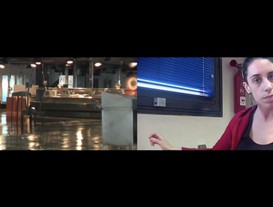María Ruido
2009.
Espanya.
vo Català,
Castellà.
20’
La Zona Franca, l'antiga zona comercial de la indústria tradicional, i el 22@, el nou espai del capitalisme logístic i tecnològic, són, com ja suposàvem, sobretot part d'un gran negoci immobiliari emparat sota el paraigua de la renovació postindustrial de Barcelona. Llavors, quines plusvàlues econòmiques i simbòliques generen i en qui reverteixen? Quins avantatges obtenen les empreses i les institucions en aquesta simbiosi? I els treballadors?
http://www.workandwords.net/

